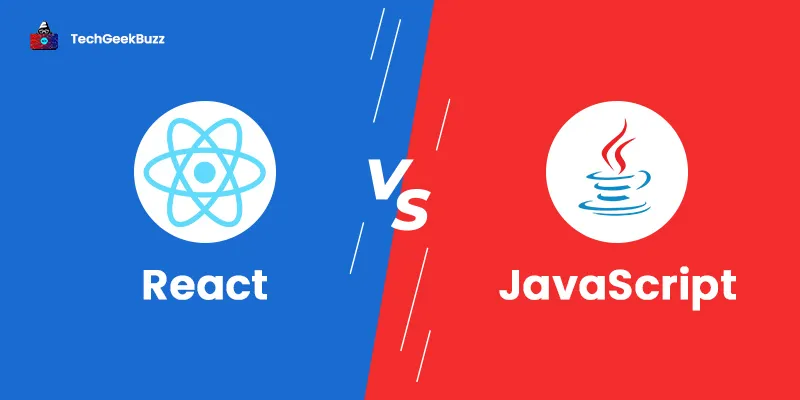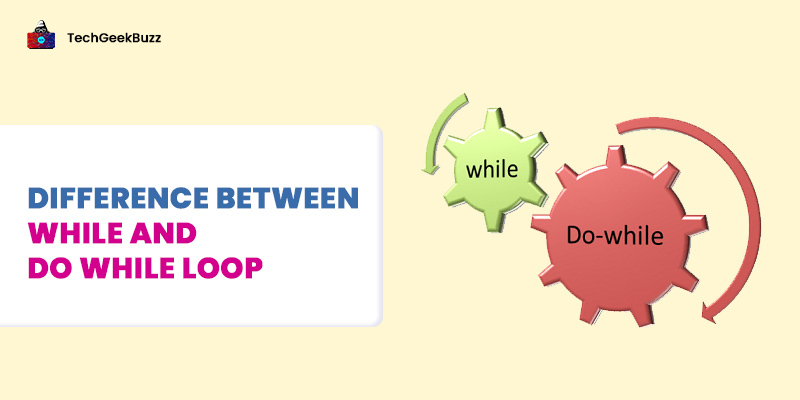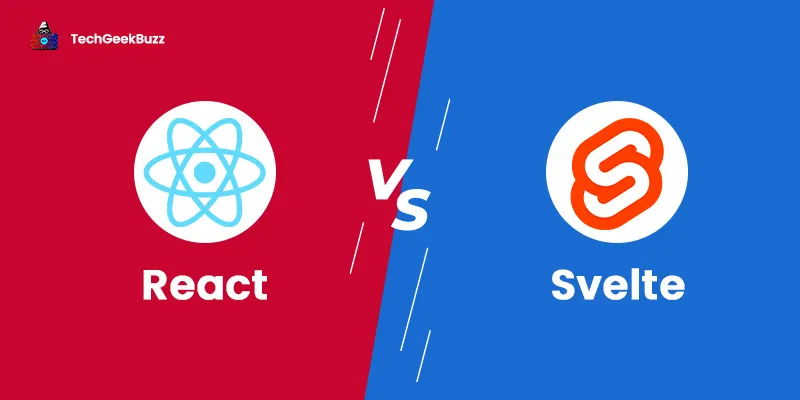In this digital epoch, every business, whether it is small-scale or large-scale, desires to have an online presence to reach out to potential customers and increase leads. As a result, web developers are highly coveted these days. They help companies to have an online presence and promote their brand by creating responsive and robust websites and web applications.
A plethora of technologies, like programming languages, libraries, and frameworks, are available out there that help web developers to create websites and web applications without any hassle. Before creating any website, developers decide upon the programming language and framework to use. Further, they can use libraries as per their development needs.
JavaScript is a popular programming language for web development. More interestingly, it can manage both client-side and server-side development of web applications. So, a question may arise in your mind “What is the need to learn additional frameworks or libraries for web development?”
The answer is using libraries and frameworks saves a lot of development time. Frameworks act as a foundation for your applications, while libraries are prewritten code that you can use directly to accomplish a specific task.
When it comes to web development, React is a popular library among developers. As a novice developer, you may certainly think about why to choose React over JavaScript for developing web applications.
This article aims at explaining to you the differences between React and JavaScript. Also, it introduces you to React and JavaScript, along with their features, upsides, and downsides.
So, let us begin our discussion!
What is React? [Definition]
React is an open-source library based on JavaScript that enables you to create intuitive user interfaces. It forms a base for the Next.js framework for creating single-page applications, server-rendered applications, and mobile applications. In other words, we can say that React is a library for creating reusable UI components.
Moreover, the only function of the React library is state management and rendering that state to DOM . It is not enough to use this library alone for creating applications. Instead, you need to leverage additional libraries for routing and client-side functionality.
With React, it becomes pretty easy to create dynamic web applications because it offers more functionality and requires less coding effort. Besides web applications, developers also use React to create robust mobile applications with the help of the React Native framework. This library forms the basis for React Native, a framework based on JavaScript to develop cross-platform mobile applications.
History
Jordan Walke, a software engineer at Meta (formerly Facebook), created the React library. Initially, he released the prototype of React called “FaxJS”. He got the idea of creating React from XHP , an HTML component library for PHP.
In 2011, Meta first deployed this React library on Facebook’s news feed. Later, in 2012, the company deployed it on Instagram. Finally, in May 2013, Facebook released React as open-sourced at ??JSConf US.
After a few years, in 2017, the company announced React Fiber, a collection of internal algorithms for rendering. Since then, React Fiber has served as the foundation for the future development of the React library.
In the same year, the company released React 16.0 to the public. Later in 2020, Meta announced React v17.0. This version was the first major release without any significant changes to React developer-facing API. The current and stable version of React is 18.1, released in April 2022.
Features
The following are the remarkable features of React:
- JSX: JSX is an acronym for JavaScript Syntax Extension. It describes the appearance of the user interface of web applications. With the help of JSX, web developers can create React components quickly and easily. It allows them to embed JavaScript objects into HTML elements.
- One-way Data Binding: As its name suggests, the data flows in only one direction, i.e., from top to bottom, in React. In other words, the data flows from the parent components to the child components in React. It is not possible for the properties in the child components to return data to the parent components. However, they can communicate with the parent component to change the state depending on the given input.
- Virtual DOM: Virtual DOM, or simply VDOM, is an acronym for Virtual Document Object Model. It is a programming concept that stores the virtual representation of the user interface in memory and uses the ReactDOM library to synchronize with the real DOM. React uses this VDOM which is an exact copy or lightweight version of real DOM.
- Control Statements: Like programming languages , React also supports control statements that enable you to display data in the browser based on the conditions that you specify in JSX.
- Components: Since React is a component-based library, it divides the entire web page into multiple components. Each component has its own logic and design.
- Extensions: React comes with multiple extensions that let developers create fully-functional web applications with intuitive user interfaces. You can extend React with React Native, Flux, Redux, and many more to create appealing and attractive UIs.
Advantages
Here are the major benefits of React:
- The virtual DOM is responsible for React’s fast speed and high performance.
- It enables developers to create reusable components. Therefore, they can save a lot of time in creating any component from scratch and reduce the development time.
- React has a community of active developers that assist you anytime when you face any problem while developing applications using it.
- This library helps you to build SEO-friendly websites because it reduces the website’s load time and improves the rendering speed.
- When you extend React with React Native, you can also develop mobile applications that can run on any platform.
Disadvantages
Some of the notable drawbacks of React are as follows:
- React is still evolving and changing. Therefore, developers have to constantly keep up with the changes and learn how to use React every time it undergoes significant changes.
- As a result of React being constantly changing and updating, there is a lack of detailed documentation available on the internet.
- Some novice developers may find the JSX syntax difficult to understand and learn.
- React can only handle the state management and rendering that state to the DOM. You need to leverage other libraries for developing fully-fledged web applications.
What is JavaScript? [Definition]
JavaScript is an open-source, dynamic scripting language for web development. Also, it is one of the core technologies of the World Wide Web (WWW). It is a multi-paradigm programming language that complies with the ECMAScript standard. Also, it comes with the application programming interfaces (APIs) to enable you to work with standard data structures, regular expressions, DOM (Document Object Model), text, and dates.
When we use JavaScript to create websites, it automatically changes web content without requiring us to reload the entire web page. Moreover, it is a just-in-time (JIT) compiled language. This means that it compiles the code during the runtime of the program and not before the execution.
Today, JavaScript powers most websites available on the internet. It is responsible for controlling the behavior of web pages. All major browsers come with the JavaScript engine to run the JavaScript code. This JavaScript engine has also become the core component of some web servers and a wide range of applications.
History
Mosaic was the first browser with a graphical user interface (GUI), which played a crucial role in the popularity of the World Wide Web (WWW). Later, Mosaic founded the Netscape Corporation and then created an improvised browser called Netscape Navigator.
However, the websites could only be static previously and were not able to dynamically change their content. This resulted in the need to add the scripting language to Netscape Navigator. For this, the company had only two options, as follows:
- To collaborate with Sun Microsystems to add the Java programming language to Navigator
- To hire Brendan Eich to incorporate the Scheme language.
The company decided to go with the second option and hired Eich to design a new scripting language that could have a more similar syntax to Java and less similar to Scheme. However, when the Netscape Corporation released the beta version of the language as a part of Navigator, they named it LiveScript. When the company decided to release it officially in December 1995, they renamed it JavaScript.
Features
The following are the noteworthy features of JavaScript:
- Object-Oriented: As JavaScript is an object-oriented programming language, it follows the encapsulation and inheritance concepts from the ES6 onwards.
- Scripting Language: JavaScript is a scripting language intended for executing the client-side code in the browser. It is not a general-purpose language; instead, it is specially designed for web applications. It converts static web pages into dynamic ones.
- Platform-Independent: Like Java, JavaScript is also a platform-independent language. This means that a JavaScript program that you write once can run on any other operating system or browser without affecting its output.
- Interpreted Language: JavaScript is an interpreted language and not the compiled one. The web browser reads a JavaScript program line by line and executes it accordingly. In contrast to the interpreted language, the compiled languages read code at once and then execute it all together.
- Lightweight: JavaScript's Just-in-Time (JIT) compilation feature makes it a lightweight language because the JS interpreter converts a JavaScript program into bytecode immediately before its execution. As a result, less powerful devices can also run JavaScript.
- Prototype-Based: JS is a prototype-based language that uses the prototypal inheritance model rather than the class inheritance.
- Dynamic Typing: Since JavaScript is a dynamically-typed language, there is no need to declare the variables before using them explicitly. The JavaScript interpreter understands the data type of variables based on their value. In simple words, there is no need to define the data type of variables.
Advantages
Some remarkable upsides of JavaScript are as follows:
- Since JavaScript runs in the client’s browser and does not require making calls to the server, it is extremely fast.
- Learning JavaScript is very easy since it has a simple syntax.
- Not only is JavaScript popular for web development but also for backend development with the advent of Node.js.
- It supports all the major browsers and is everywhere on the web.
- With JavaScript, developers can create rich and intuitive interfaces.
Disadvantages
The following are the downsides of JavaScript:
- Due to the visibility of JavaScript code to everyone, hackers can inject malicious code into the original code or can tweak the original code, which can make your web application vulnerable to attacks.
- Every browser interprets the JavaScript code differently. Therefore, it is pretty challenging to write cross-browser JavaScript code.
- There is a lack of a debugging facility. Though many HTML editors support debugging of JavaScript code, they are not as efficient as C or C++ editors. Hence, developers have to identify the errors in their codes.
- It does not support multiple inheritance.
React vs JavaScript - A Detailed Comparison
Let us now discuss the major differences between React and JavaScript.
1. Individual Components
When you use JavaScript to create web applications, you write them in one large file. This is not the case with React. You can create small building blocks called components of an application individually. This means that you can divide your entire website or web application into small components. When you combine all these small components, it forms the complete UI of your website or web application.
2. Speed
As discussed earlier, React leverages virtual DOM. Whenever you update any component, the virtual DOM gets updated. Later, React determines what changes the component undergoes by comparing the updated VDOM with the previous or pre-updated VDOM. After determining, it reflects those changes in the real DOM.
However, VDOM identifies the minimal changes that need to be reflected in the real DOM and updates only those changes. This makes websites faster than the ones developed using plain JavaScript because JavaScript websites require the rendering of the whole DOM.
3. Complex Websites and Web Apps
For creating static websites, JavaScript is the best choice. However, JavaScript is not ideal when your website or web application requires fast loading and major updates to the DOM. In this case, choosing React would be an excellent move because it uses VDOM. VDOM only updates the necessary elements in the real DOM instead of re-rendering the entire DOM.
4. Reusable Components
In website development, there are many cases where you need to repeat certain design patterns. It becomes tedious to write the code for the same task repeatedly. React allows you to write a particular design pattern as a component once and use it whenever you want. However, this is not the case with plain JavaScript.
5. Easy to Maintain
When it comes to maintenance, component-based websites are easier to maintain. This is because they allow you to change any component and observe the changes without affecting all other components.
React websites or web applications are component-based, while the ones developing using JavaScript are not.
6. UI and Logic of Websites
In the traditional web development process, while HTML and CSS manage the UI of websites, Javascript is responsible for logic. This is not the case with React since every component of a website or web application can handle both UI and logic on its own. This means that React components are capable of managing the structure and logic together on their own.
React vs JavaScript - Head to Head Comparison
|
React |
JavaScript |
|
React is an open-source library based on JavaScript for creating user interfaces. |
JavaScript is an open-source scripting language for web development. |
|
With React, you can create a web application by first developing small components and then combining them to form a complete application. |
It lets you write the source code of a web application in a single large file. |
|
Web applications developed using React are faster. |
Web applications developed using plain JavaScript are slower. |
|
React components have the ability to handle the design and logic together on their own. |
You will need HTML and CSS to manage design and JavaScript for the logic of websites. |
|
With React, you can create maintainable websites and web applications. |
It is difficult to maintain websites or web applications developed using JavaScript, |
React vs JavaScript - Which One to Choose?
From the above discussion, we can conclude that React is a good choice when you want to create complex and dynamic web applications or websites. However, if your website or web application is small and simple and does not require complex features, you can go with JavaScript.
Conclusion
Here, we conclude our discussion on the differences between React and JavaScript. While React is a JavaScript-based library, JavaScript is a front-end scripting language. Developers often choose React over JavaScript because it lets them develop high-speed, easy-to-maintain, and component-based web applications and websites.
However, if your website or web application does not require complex features and fast loading, JavaScript is good to go.
We hope that article has helped you gain insights into the difference between React and JavaScript. If you know other differences than the aforementioned ones, do let us know via the comments section.
People are also reading:





Leave a Comment on this Post